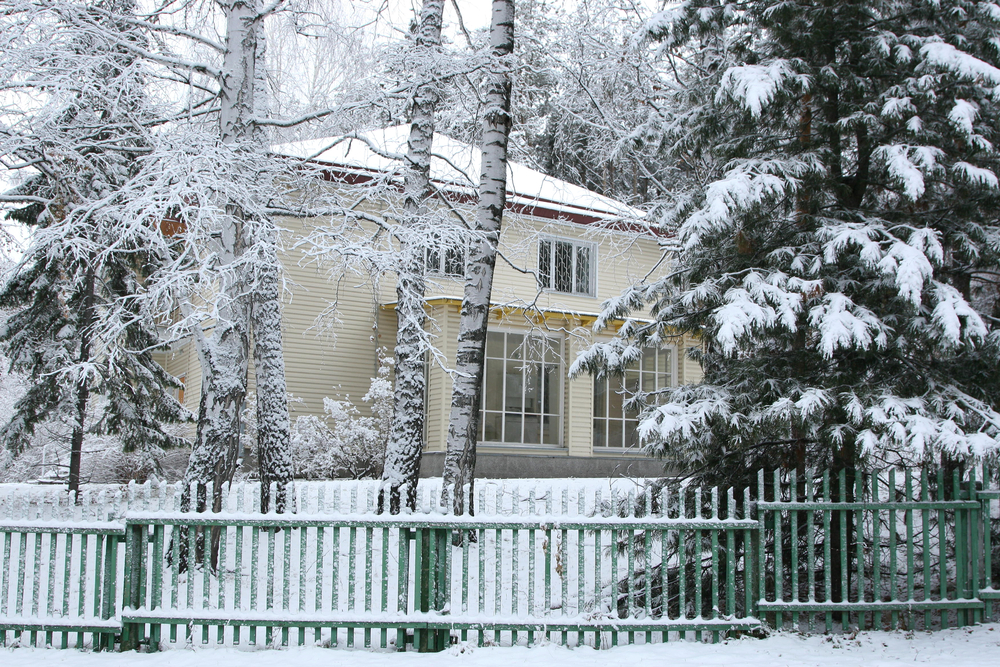Services
Fertilization
Chlorotic Maple
Colorado soils are often high in clay and deficient in micro and macro nutrients necessary for photosynthesis. High clay content in the soil profile restricts available oxygen in the root zone while making water and nutrients less available. Combined with low rainfall, these issues create the perfect condition for stress, chlorosis (yellowing leaves - see above) and decline in the health of your trees. Our personalized fertilization program will provide your trees with the micro and macro nutrients they need to thrive. It will also enrich the soil to help your trees absorb water and oxygen by reducing soil compaction.
Aphid and Mite Treatment
Aphids and mites, while not typically loss-risk insects, can build to populations in trees that result in stress which can open your trees to other pest infestations. Shrubs, on the other hand, can be devastated by high populations of aphids or mites. Spruce mites can be especially destructive to juniper bushes. Aphids breed exceptionally fast (they typically spawn new generations in 10-20 days) so it is vital to knock down building populations quickly before major damage is done. Our aphid and mite spray program provides quick knockdown of existing aphid populations while minimizing the amount of spray necessary to
control infestations. Because aphid and mite sprays are a broad spectrum pesticide, we recommend their use only as a last resort to address severe infestations.
Emerald Ash Borer Treatment
Emerald Ash Borer
Emerald ash borer (EAB) is an invasive species of pest. It came to the Midwest in 2002 and as of 2017 there were only 14 states free of EAB. The ash trees in the US have no natural defense to EAB, which as a result have devastated hundreds of millions of ash trees. EAB will attack a perfectly healthy ash tree as well as declining trees so it is essential to have your ash trees treated to prevent infestation. Prevention is the best course of action, but ash trees in the early stages of EAB infestation can benefit
from our EAB Treatment Program, prolonging the life of your trees.
Preventative Pest Treatment
IPS Beetle
Bark beetles and boring insects can do massive damage to your trees even in a single growing season. We conduct spray operations to the highest possible ethical standards in order to protect local ecosystems, pollinators, property, pets and people while protecting the high value, high risk trees on your property. We focus on loss-risk insects and apply appropriately while monitoring the rest of your trees for any incipient pest populations. Applications are effective for up to 2 ½ months.
Winter Watering
While trees are dormant in the winter, only minimal fluid transfer occurs, especially within evergreens. With Colorado’s recent warm, windy and dry winters, root desiccation has been a major problem for spruce and pine. Low water levels in the soil profile, especially while irrigation systems are turned off, can put trees in severe drought stress and cause root desiccation. Remember, snow on the ground does not equate to water in the soil and trees must be watered through the winter! We come once a month and water your trees ensuring your trees make it through the harsh winter months with as little stress as possible.
Soil-Applied Pest Control
Some insects are best controlled by systemic soil applied pesticides based on where and how they feed on your trees and shrubs. There are many benefits to soil-applied pesticides: there is no spray drift, applications are effective year-round, and our calibrated system ensures your trees are getting only the appropriate amount needed to control any existing pest issues and prevent infestation.
Root Flare Excavations and Root Pruning
Trees are often planted too deep in the ground which can lead to a number of issues that can range from reduced structural integrity to complete failure of the planting. One of the most common issues when trees are planted too deeply is girdling roots. Girdling roots are adventitious roots that grow across the trunk of the tree. When they are not found and removed in time they start to choke off the water and nutrient conduction channels in the tree. Girdling roots can get too large to cut and can start to incorporate themselves into the trunk so they cannot be removed. It is essential to discover the girdling roots early and remove them before they start to cause issues.
Trimming
Trimming is one of the most beneficial things you can do for your trees. Focus on removing dead, diseased and dying branches. Tip reduction reduces the likelihood of breakage in snow and wind storms. Trimming also promotes natural form and fixing structural issues.
Before Trimming
After Trimming
Removals
Remove dead, diseased and dangerous trees to avoid potential property damage. Removing unsightly dead trees improves property value.
Mulch Ring Installation
Mulch rings should be installed on all newly planted trees. They help with soil amendment, moisture retention, and recycling mineral elements back into the soil profile. They also promote increased growth and protection against lawn care tools such as lawn mowers and weed whackers.
Structural Pruning on Young Trees
Young trees from 3-5 years old can often benefit from structural pruning to ensure healthy growth and fewer issues later in the life of the tree. This service ensures proper spacing of scaffold branches, removes branches with poor branch attachment and subordinates codominant leads.







